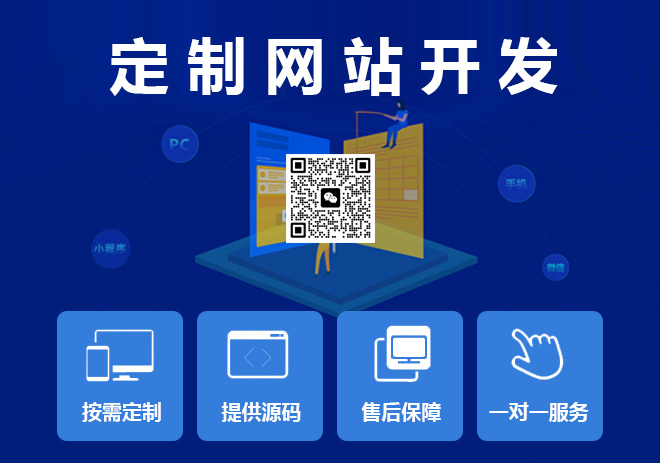使用Node.js的AsyncHooks模块追踪异步资源
作者简介:五月君,Software Designer,公众号「Nodejs技术栈」作者。

成都创新互联公司长期为上千余家客户提供的网站建设服务,团队从业经验10年,关注不同地域、不同群体,并针对不同对象提供差异化的产品和服务;打造开放共赢平台,与合作伙伴共同营造健康的互联网生态环境。为榆次企业提供专业的网站建设、成都网站制作,榆次网站改版等技术服务。拥有10多年丰富建站经验和众多成功案例,为您定制开发。
Async Hooks 功能是 Node.js v8.x 版本新增加的一个核心模块,它提供了 API 用来追踪 Node.js 程序中异步资源的声明周期,可在多个异步调用之间共享数据,本文从最基本入门篇开始学习,之后会有在某些场景下具体应用实践篇介绍。
executionAsyncId 和 triggerAsyncId
async hooks 模块提供了 executionAsyncId() 函数标志当前执行上下文的异步资源 Id,下文使用 asyncId 表示。还有一个 triggerAsyncId() 函数来标志当前执行上下文被触发的异步资源 Id,也就是当前异步资源是由哪个异步资源创建的。每个异步资源都会生成 asyncId,该 id 会呈递增的方式生成,且在 Node.js 当前实例里全局唯一。
- const asyncHooks = require('async_hooks');
- const fs = require('fs');
- const asyncId = () => asyncHooks.executionAsyncId();
- const triggerAsyncId = () => asyncHooks.triggerAsyncId();
- console.log(`Global asyncId: ${asyncHooks.executionAsyncId()}, Global triggerAsyncId: ${triggerAsyncId()}`);
- fs.open('hello.txt', (err, res) => {
- console.log(`fs.open asyncId: ${asyncId()}, fs.open triggerAsyncId: ${triggerAsyncId()}`);
- });
下面是我们运行的结果,全局的 asyncId 为 1,fs.open 回调里打印的 triggerAsyncId 为 1 由全局触发。
- Global asyncId: 1, Global triggerAsyncId: 0
- fs.open asyncId: 5, fs.open triggerAsyncId: 1
默认未开启的 Promise 执行跟踪
默认情况下,由于 V8 提供的 promise introspection API 相对消耗性能,Promise 的执行没有分配 asyncId。这意味着默认情况下,使用了 Promise 或 Async/Await 的程序将不能正确的执行和触发 Promise 回调上下文的 ID。即得不到当前异步资源 asyncId 也得不到当前异步资源是由哪个异步资源创建的 triggerAsyncId,如下所示:
- Promise.resolve().then(() => {
- // Promise asyncId: 0. Promise triggerAsyncId: 0
- console.log(`Promise asyncId: ${asyncId()}. Promise triggerAsyncId: ${triggerAsyncId()}`);
- })
通过 asyncHooks.createHook 创建一个 hooks 对象启用 Promise 异步跟踪。
- const hooks = asyncHooks.createHook({});
- hooks.enable();
- Promise.resolve().then(() => {
- // Promise asyncId: 7. Promise triggerAsyncId: 6
- console.log(`Promise asyncId: ${asyncId()}. Promise triggerAsyncId: ${triggerAsyncId()}`);
- })
异步资源的生命周期
asyncHooks 的 createHook() 方法返回一个用于启用(enable)和禁用(disable)hooks 的实例,该方法接收 init/before/after/destory 四个回调来标志一个异步资源从初始化、回调调用之前、回调调用之后、销毁整个生命周期过程。
init(初始化)
当构造一个可能发出异步事件的类时调用。
- async:异步资源唯一 id
- type:异步资源类型,对应于资源的构造函数名称,更多类型参考 async_hooks_type
- triggerAsyncId:当前异步资源由哪个异步资源创建的异步资源 id
- resource:初始化的异步资源
- /**
- * Called when a class is constructed that has the possibility to emit an asynchronous event.
- * @param asyncId a unique ID for the async resource
- * @param type the type of the async resource
- * @param triggerAsyncId the unique ID of the async resource in whose execution context this async resource was created
- * @param resource reference to the resource representing the async operation, needs to be released during destroy
- */
- init?(asyncId: number, type: string, triggerAsyncId: number, resource: object): void;
before(回调函数调用前)
当启动异步操作(例如 TCP 服务器接收新链接)或完成异步操作(例如将数据写入磁盘)时,系统将调用回调来通知用户,也就是我们写的业务回调函数。在这之前会先触发 before 回调。
- /**
- * When an asynchronous operation is initiated or completes a callback is called to notify the user.
- * The before callback is called just before said callback is executed.
- * @param asyncId the unique identifier assigned to the resource about to execute the callback.
- */
- before?(asyncId: number): void;
after(回调函数调用后)
当回调处理完成之后触发 after 回调,如果回调出现未捕获异常,则在触发 uncaughtException 事件或域(domain)处理之后触发 after 回调。
- /**
- * Called immediately after the callback specified in before is completed.
- * @param asyncId the unique identifier assigned to the resource which has executed the callback.
- */
- after?(asyncId: number): void;
destory(销毁)
当 asyncId 对应的异步资源被销毁后调用 destroy 回调。一些资源的销毁依赖于垃圾回收,因此如果对传递给 init 回调的资源对象有引用,则有可能永远不会调用 destory 从而导致应用程序中出现内存泄漏。如果资源不依赖垃圾回收,这将不会有问题。
- /**
- * Called after the resource corresponding to asyncId is destroyed
- * @param asyncId a unique ID for the async resource
- */
- destroy?(asyncId: number): void;
promiseResolve
当传递给 Promise 构造函数的 resolve() 函数执行时触发 promiseResolve 回调。
- /**
- * Called when a promise has resolve() called. This may not be in the same execution id
- * as the promise itself.
- * @param asyncId the unique id for the promise that was resolve()d.
- */
- promiseResolve?(asyncId: number): void;
以下代码会触发两次 promiseResolve() 回调,第一次是我们直接调用的 resolve() 函数,第二次是在 .then() 里虽然我们没有显示的调用,但是它也会返回一个 Promise 所以还会被再次调用。
- const hooks = asyncHooks.createHook({
- promiseResolve(asyncId) {
- syncLog('promiseResolve: ', asyncId);
- }
- });
- new Promise((resolve) => resolve(true)).then((a) => {});
- // 输出结果
- promiseResolve: 2
- promiseResolve: 3
注意 init 回调里写日志造成 “栈溢出” 问题
一个异步资源的生命周期中第一个阶段 init 回调是当构造一个可能发出异步事件的类时会调用,要注意由于使用 console.log() 输出日志到控制台是一个异步操作,在 AsyncHooks 回调函数中使用类似的异步操作将会再次触发 init 回调函数,进而导致无限递归出现 RangeError: Maximum call stack size exceeded 错误,也就是 “ 栈溢出”。
调试时,一个简单的记录日志的方式是使用 fs.writeFileSync() 以同步的方式写入日志,这将不会触发 AsyncHooks 的 init 回调函数。
- const syncLog = (...args) => fs.writeFileSync('log.txt', `${util.format(...args)}\n`, { flag: 'a' });
- const hooks = asyncHooks.createHook({
- init(asyncId, type, triggerAsyncId, resource) {
- syncLog('init: ', asyncId, type, triggerAsyncId)
- }
- });
- hooks.enable();
- fs.open('hello.txt', (err, res) => {
- syncLog(`fs.open asyncId: ${asyncId()}, fs.open triggerAsyncId: ${triggerAsyncId()}`);
- });
输出以下内容,init 回调只会被调用一次,因为 fs.writeFileSync 是同步的是不会触发 hooks 回调的。
- init: 2 FSREQCALLBACK 1
- fs.open asyncId: 2, fs.open triggerAsyncId: 1
异步之间共享上下文
Node.js v13.10.0 增加了 async_hooks 模块的 AsyncLocalStorage 类,可用于在一系列异步调用中共享数据。
如下例所示,asyncLocalStorage.run() 函数第一个参数是存储我们在异步调用中所需要访问的共享数据,第二个参数是一个异步函数,我们在 setTimeout() 的回调函数里又调用了 test2 函数,这一系列的异步操作都不影响我们在需要的地方去获取 asyncLocalStorage.run() 函数中存储的共享数据。
- const { AsyncLocalStorage } = require('async_hooks');
- const asyncLocalStorage = new AsyncLocalStorage();
- asyncLocalStorage.run({ traceId: 1 }, test1);
- async function test1() {
- setTimeout(() => test2(), 2000);
- }
- async function test2() {
- console.log(asyncLocalStorage.getStore().traceId);
- }
AsyncLocalStorage 用途很多,例如在服务端必不可少的日志分析,一个 HTTP 从请求到响应整个系统交互的日志输出如果能通过一个 traceId 来关联,在分析日志时也就能够清晰的看到整个调用链路。
下面是一个 HTTP 请求的简单示例,模拟了异步处理,并且在日志输出时去追踪存储的 id
- const http = require('http');
- const { AsyncLocalStorage } = require('async_hooks');
- const asyncLocalStorage = new AsyncLocalStorage();
- function logWithId(msg) {
- const id = asyncLocalStorage.getStore();
- console.log(`${id !== undefined ? id : '-'}:`, msg);
- }
- let idSeq = 0;
- http.createServer((req, res) => {
- asyncLocalStorage.run(idSeq++, () => {
- logWithId('start');
- setImmediate(() => {
- logWithId('processing...');
- setTimeout(() => {
- logWithId('finish');
- res.end();
- }, 2000)
- });
- });
- }).listen(8080);
下面是运行结果,我在第一次调用之后直接调用了第二次,可以看到我们存储的 id 信息与我们的日志一起成功的打印了出来。
image.png
在下一节会详细介绍, 如何在 Node.js 中使用 async hooks 模块的 AsyncLocalStorage 类处理请求上下文, 也会详细讲解 AsyncLocalStorage 类是如何实现的本地存储。
Reference
https://nodejs.org/dist/latest-v14.x/docs/api/async_hooks.html
本文名称:使用Node.js的AsyncHooks模块追踪异步资源
分享地址:http://www.csdahua.cn/qtweb/news39/548239.html
网站建设、网络推广公司-快上网,是专注品牌与效果的网站制作,网络营销seo公司;服务项目有等
声明:本网站发布的内容(图片、视频和文字)以用户投稿、用户转载内容为主,如果涉及侵权请尽快告知,我们将会在第一时间删除。文章观点不代表本网站立场,如需处理请联系客服。电话:028-86922220;邮箱:631063699@qq.com。内容未经允许不得转载,或转载时需注明来源: 快上网
- 「探究数据库性能排名的因素和标准」(数据库性能排名)
- 封面怎么打印?(档案袋封面怎么打印)
- Spring Security过滤器链如何匹配到特定的请求
- 阅读怎么提高?(英语阅读怎么提高)
- 解锁四级数据库:使用注册码开启高级功能 (四级数据库 注册码)
- 的优势火红的缓存在内存里的卓越之处(redis缓存在内存中)
- 快速指南:如何在LinuxVCSA上更改密码?(linuxvcsa更改密码)
- Oracle中使用换行代码的技巧
- 限制Redis实现的请求频率限制(redis 请求频率)
- 深入解析JVM内存区域组成
- 如何避免网络安全设备部署失败
- Linux每周几个命令--查找篇
- Python开发者必知的11个PythonGUI库,你用过几个?
- 快来体验用Redis构建聊天室的乐趣(利用redis聊天室)
- 研究ADO调整VisualC++语言进行学习